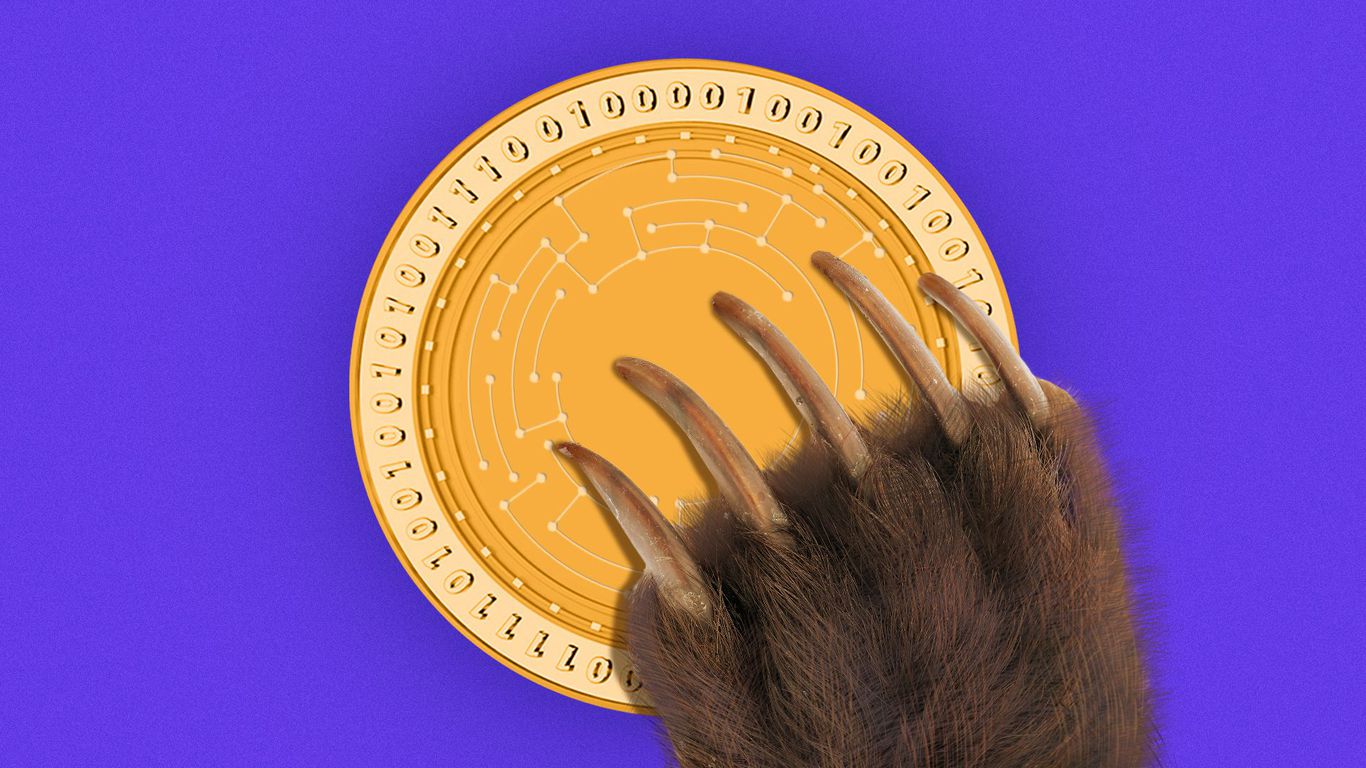Bear markets are not fun, but they are also not the end (usually).
The big pictures: The crypto market is still very new. There are risks and shaky technologies, many of which are failing in spectacular attention-grabbing fashion this week. But at the same time, the industry is on firmer footing today than it was in 2018’s Crypto Winter, the last bear market.
- A bear market is traditionally thought of as a time when an asset trades below its prior high by 20% or more, usually accompanied by a lot of pessimism about the near-term future.
- But this is a nonsensical way to think about crypto. A 20% drop could be just a weird Tuesday.
None, None we may have arrived at bear. The mood needs to shift, and we might be there.
- Bitcoin has failed to less than half of its most recent all-time high of $69,045 since Nov. 10. That alone is probably enough to call this a bear, but if it goes below $20,000 (the prior bull’s all-time high), that will be symbolically powerful.
But in crypto, it’s not truly a bear market until there are real consequences, such as:
- funds close,
- Startups shutter or
- “Established” crypto companies start announcing layoffs
Be smart: This is where things are different this time. Billions of dollars are committed to building out the industry. Just this year, venture funds with over a billion dollars under management have been announced, including Haun Ventures, Electric Capital, Andreessen-Horowitz’s new fund, FTX Ventures and others.
- That’s enough to launch many companies as well as shore up their best bets in rough times.
Brady’s thought bubble: Crypto will not be “dead” after a severe downturn, but it might drop out of the national conversation again. Regardless, the sector will carry on.
- One of these days, something will get folks excited again, and the market will perk back up.
Background: In 2018, the bear market kicked in when word started going around that the US Securities and Exchange Commission was knocking on the doors of startups funded by initial coin offerings (ICOs).
- Back then, it was hard to buy anything but bitcoins with dollars. So eager investors bought bitcoins, traded them for ethers, and then bought into ICOs. That drove up the price for everything.
- Demand for ICOs was basically the whole demand for cryptocurrency, so when it dried up, the whole industry dried up.
Today, there’s no such clear single cause, in part because the cryptocurrency market has more use cases and more operational companies now.
- Having learned from 2018, crypto companies have been prepared.
- As early as 2021, projects started hedging their volatile treasury holdings by shifting part of their funds into dollar-backed stablecoins, so they could ride out a downturn.
The bottom line: Bear markets are familiar. Not one likes them, but they come often enough that the established leaders know how to ride them out.
Go deeper: Teach yourself crypto in 10 steps with $100
.
